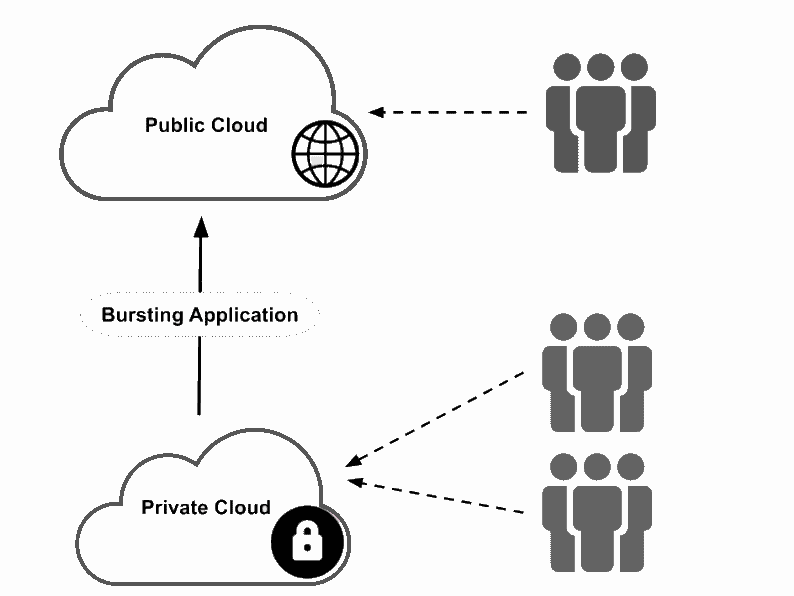What is Cloud Bursting?
Cloud Bursting is a configuration method that enables private cloud resources to use the public cloud whenever on-premises infrastructure reaches its peak. DevOps tools like configuration management are used to specify the capacity threshold or trigger event that will activate Cloud Bursting. These cloud bursting can be triggered automatically in reaction to high demand usage or by manual request.
Cloud Burst Benefits
- FLEXIBILITY: Flexible and cost-effective to manage the capacity of load ideally.
- SCALABILITY: It is simple to scale up and down the computing resource of the public cloud to manage the load burst.
- AGILITY: Cloud Bursting provides the agility to adapt to the changes that the cloud capacity needs.
- ABILITY: Cloud Bursting ensure that important application and services do not have any interference in service.
- EFFECTIVITY: Investment costs are reduced in on-premised infrastructure.

How Organizations can implement cloud bursting effectively?
To implement cloud bursting effectively in an organization, IT administrators configure the limits of on-premises computing resources. When it reaches the capacity limits the on-premises resources switch to the public cloud resources. By monitoring the use of resources in detail, organizations can overcome their complexities and increase their hybrid cloud capabilities. There are three ways of implementing cloud bursting in organizations.
Distributed Load Balancing: Workloads are distributed among public cloud and private data centers by using distributed load balancing technologies. You have to set a standby deployment in the public cloud with some capacity that expands as needed to handle workloads. You also have to set a load threshold in your on-premises and distributed it as needed.
Manual Cloud Bursting: This method for manually provisioning and de-provisioning the public cloud resources is basically used to create large, temporary cloud deployments and can be deleted anytime when they are no longer needed.
Automated Cloud Bursting: It uses a cloud bursting tool to automatically provision resources from public cloud resources. The tool dynamically provisions resources from the public cloud whenever on-premises is needed and de-provisions when the demand is down.
Organizations need to implement software and tools that can automatically provision public cloud resources. Because Manual Cloud Busting effectively works on small workload cases.
Conclusion
Now we can know what is cloud bursting and how can we implement that in organizations. Cloud Bursting is cost-effective for organizations and provides public cloud resources for private data centers or on-premises cloud resources for their most essential applications. Cloud Burst can increase the performance of applications across the world.
![]()
